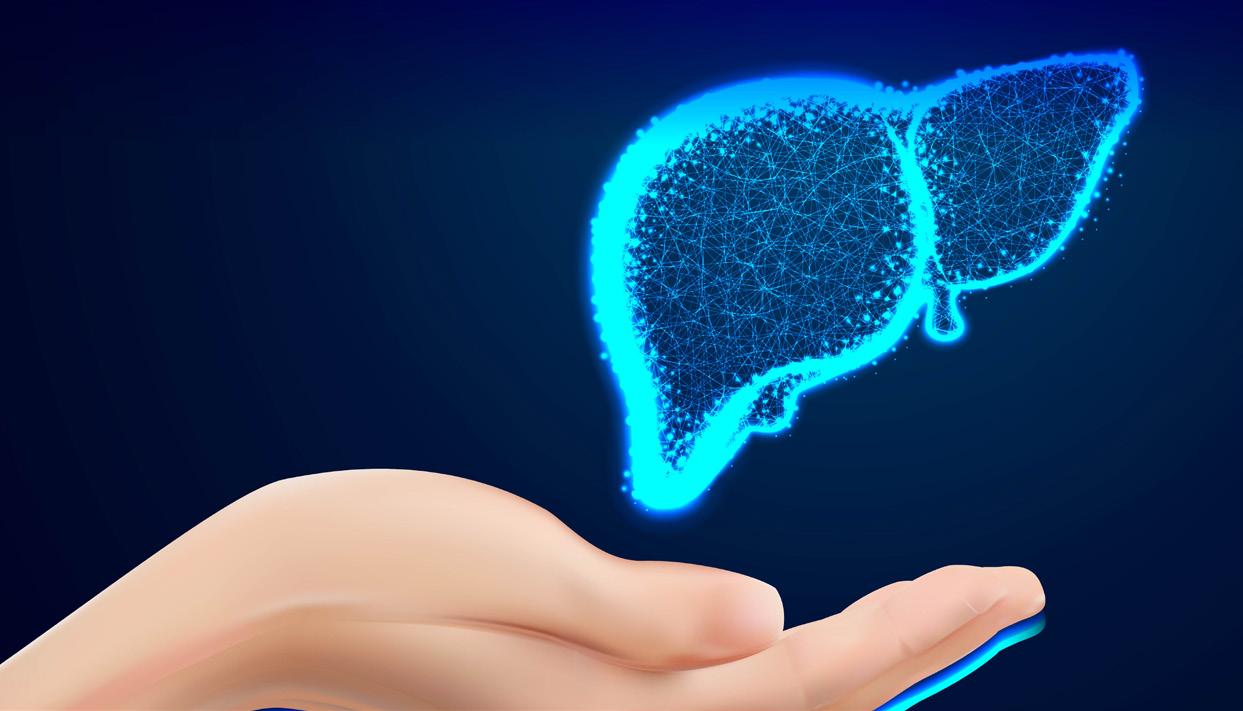
3 minute read
Clinical Cosmos
Unveiling Advanced Diagnostics and AI-Driven Precision for Early Liver Injury Detection
Drug-Induced Liver Injury (DILI) poses a complex challenge, demanding advanced diagnostic strategies for timely intervention. Integrating key diagnostic parameters with cutting-edge technology is crucial, combining established guidelines with innovative tools to enhance precision diagnostics.
DILI encompasses a spectrum of hepatic disorders resulting from exposure to drugs or their metabolites, necessitating a comprehensive diagnostic approach for timely intervention.
Key diagnostic parameters include Hy’s Law, emphasizing elevated Alanine Aminotransferase (ALT) and total bilirubin levels concurrently as potential indicators of severe DILI. An ALT exceeding three times the upper limit of normal (ULN) and total bilirubin surpassing two times ULN trigger heightened vigilance. Additionally, the Roussel Uclaf Causality Assessment Method (RUCUM) aids in distinguishing idiosyncratic from intrinsic DILI, with a score of 6 or higher serving as a red flag for severe hepatotoxicity.
The Evaluation of Drug-Induced Serious Hepatotoxicity (eDISH) emerges as a dynamic tool for organizing liver laboratory data. eDISH plots display peak serum ALT and total bilirubin levels for each subject, providing a visual perspective of hepatotoxicity trends. This graphical representation enhances the understanding of liver safety data and facilitates early identification.

In clinical trials, FDA stopping rules are pivotal guidelines, dictating the cessation of drug investigations when specific criteria, such as those outlined in Hy’s Law, are met. Immediate action is crucial in the face of potential severe hepatotoxicity. DILI can result from various drug classes, including antibiotics, anticonvulsants, and nonsteroidal anti-inflammatory drugs (NSAIDs).
The mechanism involves drugs or their metabolites targeting different hepatic cells, leading to acute, subacute, or chronic hepatobiliary diseases. Technology plays a pivotal role in advancing DILI detection. Machine learning algorithms, trained on diverse datasets, can analyze eDISH plots alongside traditional markers, contributing to a more nuanced and comprehensive analysis of potential hepatotoxicity.
These algorithms can incorporate factors such as genetic predisposition, drug metabolism profiles, and patient-specific data. By leveraging artificial intelligence and machine learning, healthcare professionals gain a more sophisticated understanding of the complex interactions leading to DILI. Likewise, automated systems can trigger alerts when eDISH plots showcase a rapid rise in ALT and bilirubin levels, signaling potential severe DILI.

In conclusion, the integration of advanced diagnostics, key parameters, and technological tools, such as eDISH and machine learning algorithms, forms a robust strategy for early identification of DILI. This comprehensive approach, blending established guidelines with innovative techniques, enables healthcare professionals to leverage dynamic visualizations and algorithms, enhancing diagnostic accuracy, and enabling proactive interventions for improved patient outcomes.
Dr. Siva Kumar Buddha
Director Pharmacovigilance, Head of Signal and Risk Managementat Indegene.











